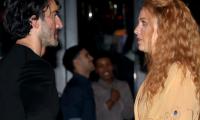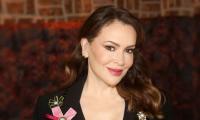It was the news that had millions of fans not so much gently weeping as crying for help — the Beatles were no more
While technically speaking the Fab Four were not officially dissolved until 1975, Sir Paul McCartney’s bombshell press release on April 10, 1970 marks the end of the world’s favourite band. He could see no future in his famed songwriting partnership with John Lennon, Sir Paul said while promoting a solo album, and did not miss either George Harrison or Sir Ringo Starr.
Five decades on and debate still rages over what — or who, in the case of Yoko Ono — broke up the Beatles. Following the split, John, Paul, George and Ringo went their separate ways, pursuing successful solo careers while the band’s music swelled in popularity. Here’s what they did next:
Sir Paul McCartney
Sir Paul’s longevity is almost unrivalled in pop music, with only Bob Dylan remaining as relevant for as long. Following the break-up of The Beatles, Sir Paul fell into depression, later admitting he relied on heavy drinking to cope.
His first album as a solo artist, McCartney, arrived in 1970 but will forever be connected with the band’s split. Sir Paul later led Wings — a band featuring his late wife Linda on keyboard — who released hits including Band On The Run and James Bond title track Live And Let Die.
He returned to solo work during the 80s, and was inducted into the Rock And Roll Hall Of Fame as in individual in 1999. The Beatles were inducted in 1988. His revered status has at times placed his personal life under scrutiny.
Following Linda’s death in 1998, Sir Paul married the former model and anti-landmine campaigner Heather Mills in 2002. It ended in a highly publicised, acrimonious divorce six years later. Sir Paul married his third wife, Nancy Shevell, in 2011.
The musician, 77, remains a venerated figure and continues to perform and produce new material. His latest album, 2018’s Egypt Station, was warmly received by critics and topped the charts in the US.
Sir Ringo Starr
The only other surviving Beatle, Sir Ringo continues to spread his message of “peace and love”. The drummer, 79, began life after the band with a string of hit singles including It Don’t Come Easy, Photograph and You’re Sixteen, the latter two reaching number one in the US. He also became part of the notorious drinking club The Hollywood Vampires, which included the hell-raisers Alice Cooper, Keith Moon and Harry Nilsson. Sir Ringo later admitted he lost years of his life to booze and entered rehab with his second wife, Bond girl Barbara Bach, in 1988. He has been sober since.
Memorably, he lent his voice to the children’s TV series Thomas the Tank Engine during the mid-1980s. In 2011, Rolling Stone readers named him the fifth-greatest drummer of all time.
A prominent fan of Brexit, Sir Ringo was criticised in some quarters for saying the UK should “get on with” its withdrawal from the European Union. He continues to perform.
John Lennon
Lennon’s post-Beatles career included seminal songs, a US president’s attempt to deport him and, a decade after the band broke up, his own murder. He released his debut solo effort, John Lennon/Plastic Ono Ban, in December 1970, which included the enduring hits Mother and Working Class Hero.
Imagine followed less than a year later. Another critical and commercial success, its title track is Lennon’s best-known solo work and remains inextricably linked to his legacy.
In the early 1970s, Lennon and Ono were prominent anti-Vietnam war protesters, leading to the Nixon administration’s failed three-year bid to deport them. He split from Ono for 18 months between 1973-75, a period he later called his “lost weekend”. His debauched partying with Nillson made headlines, including an infamous incident at The Troubadour club, where he is said to have stuck an unused menstrual pad on his forehead.
Lennon and Ono got back together in 1975 and their son, Sean, was born. Lennon retreated from the music industry for five years and released album Double Fantasy in November 1980. On December 8, Lennon was shot and killed by obsessed fan Mark Chapman. Ono scattered his ashes in New York’s Central Park, where the Strawberry Fields memorial was later created. He was voted the eighth greatest Briton in a 2002 poll by the BBC.
George Harrison
The so-called “quiet Beatle” was prolific in his life after the band. His first post-Fab Four solo project was the triple album All Things Must Pass, which contained the song My Sweet Lord. It was one of 12 studio albums he released on his own.
Harrison was instrumental in organising charity concerts in 1971, a precursor to later benefit concerts such as Live Aid. In 1988 Harrison set up supergroup the Traveling Wilburys, alongside Dylan, Jeff Lynne, Roy Orbison and Tom Petty.
On December 30 1999, Harrison and his wife Olivia were attacked at their home in Oxfordshire by an intruder, 34-year-old Michael Abram, who suffered from paranoid schizophrenia. He attacked Harrison with a kitchen knife, seriously injuring him before Olivia managed to incapacitate him by hitting him with a fireplace poker.
In May 2001 it was reported Harrison had undergone treatment for cancer. In November of that year, he came together with Sir Paul and Sir Ringo for the final time. Harrison died at Sir Paul’s home in Los Angeles November 29 2001. He was 58. In line with Hindu tradition, his family scattered his ashes in the Ganges and Yamuna rivers in India.
Harrison’s life was explored in the 2011 documentary George Harrison: Living In The Material World, directed by Martin Scorsese.
Inter Milan coach Simone Inzaghi. — Reuters/File MILAN: Inter Milan strolled into the quarter-finals of the Italian...
Manchester City defender Ruben Dias.— AFP/File LONDON: Manchester City defender Ruben Dias has been ruled out for up...
Stars players seen receiving player of the match award from Muhammad Waseem in this undated image.— PCB website/File...
South Africa's first choice spinner Keshav Maharaj.— Reuters/File CAPE TOWN: First choice spinner Keshav Maharaj...
The front facade of the PSB Coaching Centre in Peshawar. — PSB Islamabad/WebsiteLAHORE: The Pakistan Sports Board ...
Australian batsman Sam Konstas plays a shot during Australia A vs India A match at the Melbourne Cricket Ground. —...







